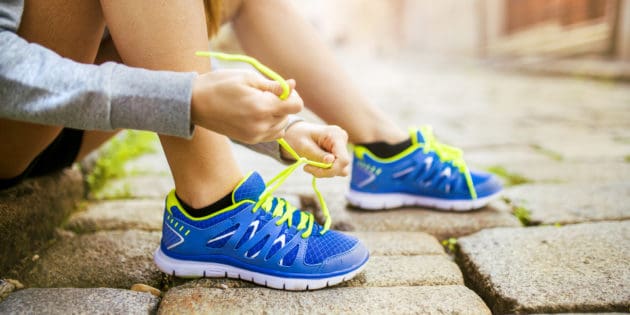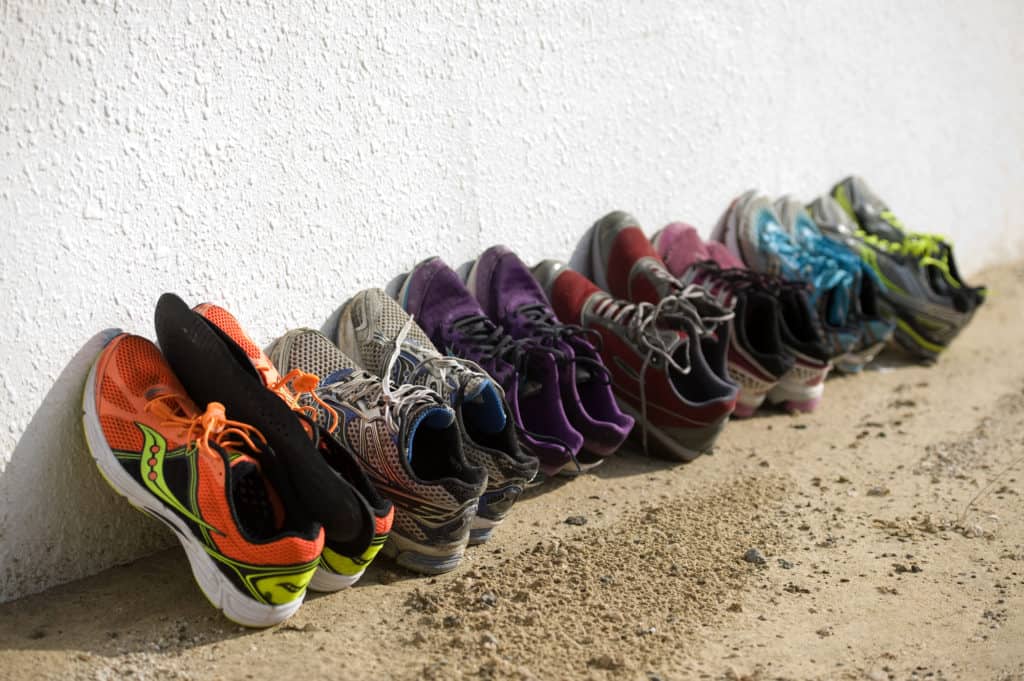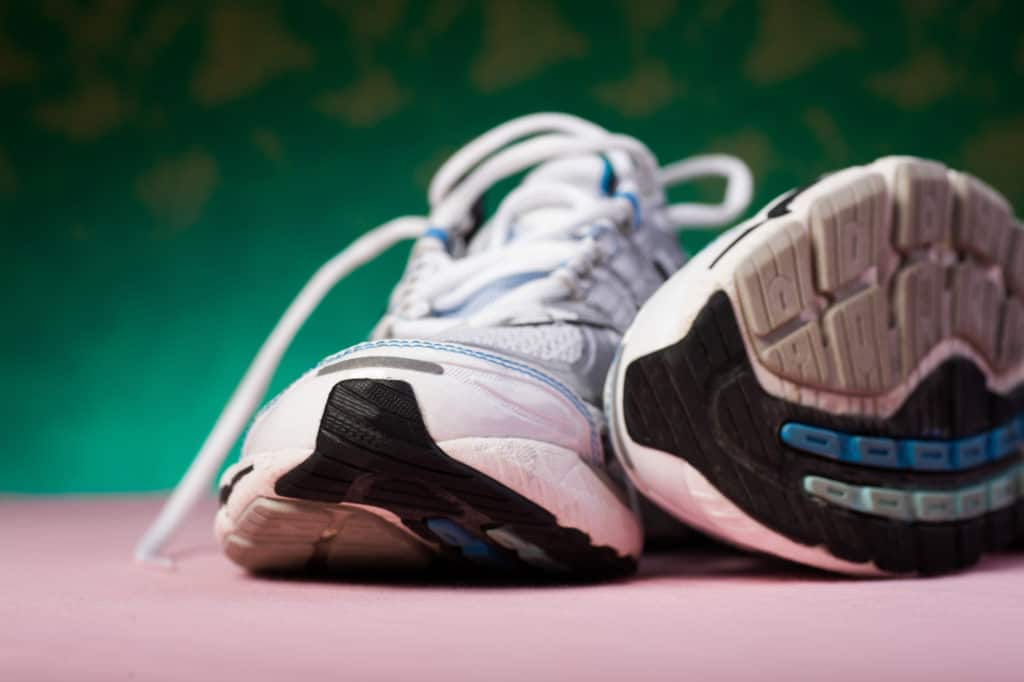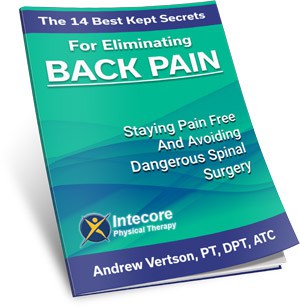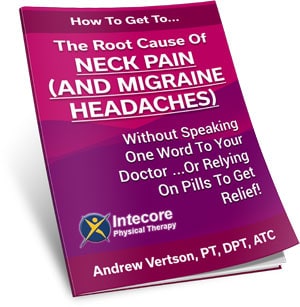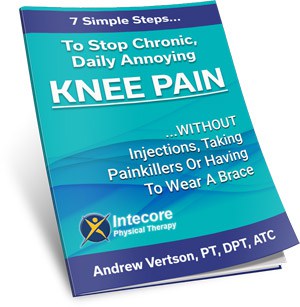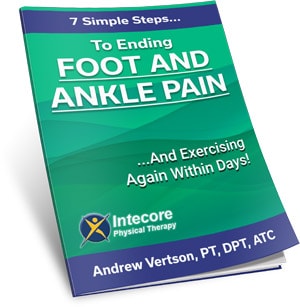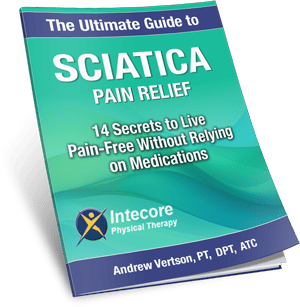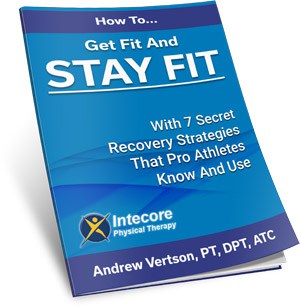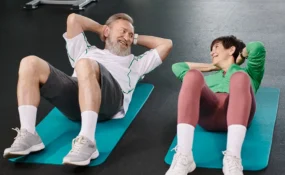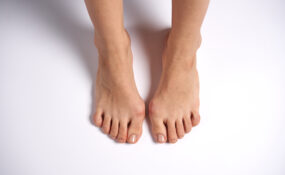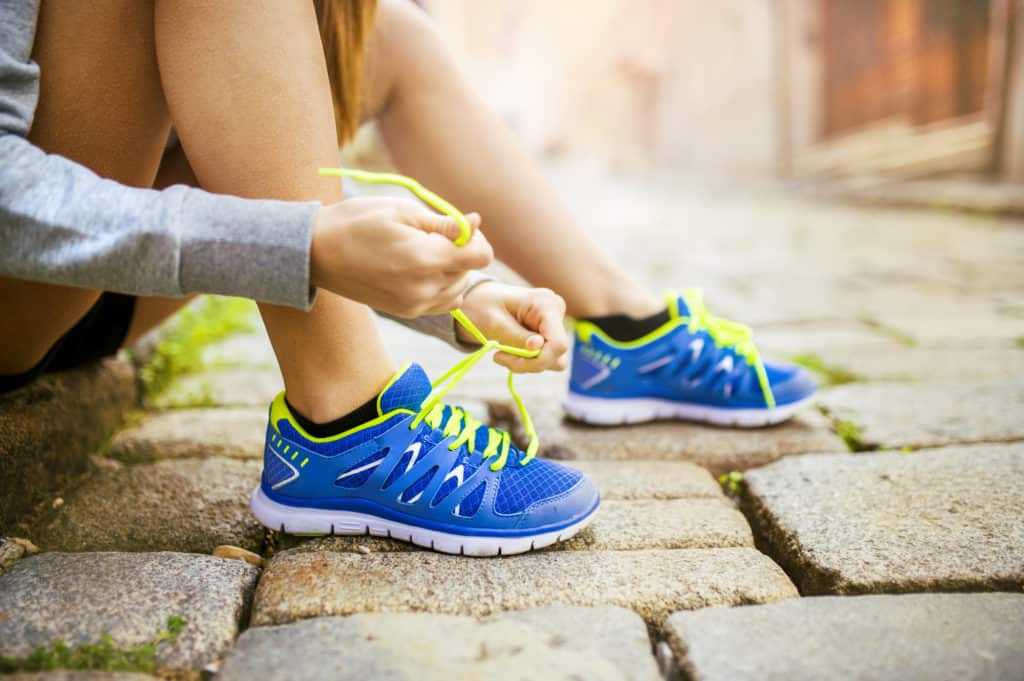 Do you get a sharp pain in the back or your heels or shooting pain in the balls of your feet when you’re running? Maybe, a constant ache in the front or your legs?
Do you get a sharp pain in the back or your heels or shooting pain in the balls of your feet when you’re running? Maybe, a constant ache in the front or your legs?
Yes. Well, it could be something as simple as your footwear.
Whatever your workout of choice, whether it’s spending time at the gym, walking, or running, we can tell you that wearing the right footwear is essential. Why? Because wearing inappropriate footwear can cause injury, hamper your fitness routine, and prevent you from making good progress.
Selecting a good quality pair of training shoes for running and other workouts will prevent injuries to the foot or ankle and make your exercise routine a more enjoyable experience. If you’re a serious runner, buying the right footwear is critical to get your biomechanics and gait exactly right.
It could be the difference between a 10-minute mile versus a 9-minute mile or being able to comfortably run 5k versus 15K.
More Blogs From Intecore
Killer Stress: What Is It Doing To Your Health?
Tennis Elbow: What You Need To Know
Flat Feet: How Can Physical Therapy Help?
What Kind Of Footwear Should I Choose?

A wide variety of sports footwear is available to suit almost every kind of activity. For example, if you spend a lot of time walking or hiking, opt for lightweight walking shoes that support your ankles.
On the other hand, if you prefer to run or do aerobics, you can buy training shoes with built-in shock absorbers that prevent too much stress on your knees and other joints. For tennis, choose shoes with flexible soles. Likewise, basketball shoes offer better protection against foot and ankle injuries due to the “high top.”
If you’re a runner, protection, and grip are additional factors to consider when choosing the right training shoes. Top-quality running shoes – fitted by a specialist physical therapist are designed to make sure your gait is good and to absorb force every time your feet hit the ground (which is the main cause of tendon and joint injury in regular runners).
Things to Keep in Mind When Buying Running Shoes
Researchers believe the kind of shoe you select should be governed by the sports activity you’re participating in. Any activity you do three times, or more weekly requires more robust footwear.
But we also believe that their fit is one of the most important features when choosing running shoes. If the fit is too large or narrow or the heel causes blisters, it will only lead to injury. Therefore, it’s imperative to try shoes on before buying.
Don’t just try one shoe on, either. You must try both and walk around for a while and get a real feel for the fit and whether it suits you and your feet before buying.
Our Tips To Help You Select The Right Pair Of Running Shoes
- 1. The best time to buy a pair of running shoes is to visit a shop in the evening, first thing in the morning, or even after a workout, as our feet mostly expand at these times.
- 2. Your heel should not slide out of the shoe, and if it does slide out, you will need to tie the laces tighter or select a different pair of shoes that do not have this issue.
- 3. When trying for size, we recommend using the same sports socks you wear when training. Also, ensure adequate space between your big toe and the end of the shoe. As feet tend to swell with movement like running, one that seems the right fit when buying will become tight when you start running and probably cause pain.
- 4. While your laces must offer a tight fit to prevent the shoe from moving, it should not be overtight as it can hamper circulation and proper blood and oxygen flow, which can cause inflammation and injury.
- 5. If you’re running outdoors, select running shoes that suit the weather where you plan to use them. For example, if you’re running in heat, choose shoes with a breathable mesh on top to prevent your feet from getting too hot and sweaty. Likewise, choose appropriate shoes for running in a colder climate.
- 6. Check the flexibility of the shoe by bending it. At the same time, it should not be over-flexible as it will not offer proper support to the sole.
What Are The Advantages Of Selecting The Right Shoes?
The biggest advantage of choosing the right type of shoes for running is they offer support and protection to help prevent injuries you might otherwise sustain while running – like ankle strains and sprains, ligaments and tendon injuries, and foot fractures.
For instance, a good quality pair of running shoes can lessen the impact on the lower foot and cushion when the foot impacts the ground while running. But the added benefit of choosing shoes specifically designed for running is that they help you perform better and run faster by providing good grip, making it easier to change direction at speed and prevent slips and falls.
Many of the runners we see at the Intecore Physical Therapy Clinic come to us because they’ve been injured due to running in improper footwear. Apart from regular running injuries like sprains, fractures, corns, and bunions, we also see less common injuries occur that are also due to ill-fitting footwear.
A common one is “metatarsalgia,” which causes constant pain in the ball of the foot.
When Should I Replace My Running Shoes?
You can continue wearing shoes for many years, even decades. Still, over time they lose their ability to properly support your feet and ankles. Running shoes particularly have a definite lifespan, after which they lack proper protection.
Studies suggest that running shoes are good for around 400-500 miles, and you should ideally replace them at the end of that period. However, if you cover around 25 miles a week, you should consider replacing your running shoes after around 20 weeks.
But the best way to judge the condition of your shoes and whether or not you need to replace them is to check the midsole (the cushion of the shoe), which will show signs of damage where the tread has been worn down if it’s time to replace them and get a new pair.
Getting a good pair of running shoes is a worthwhile investment.

Some good deals are available online, with many brands offering up to 40-50% discounts at various times of the year. It is worth looking around and choosing a premium pair that will last for a long time while offering value for money.
With the advent of technology, a physical therapist can now match sportspeople to footwear based on the level of pronation in their feet. The pronation or bending of the arch of the feet is a natural shock absorber when running.
While a certain amount of pronation is essential, some people have excessive pronation due to a flat arch of “flat feet,” causing the foot to fold inwards. However, in other runners, a complete lack of pronation may require additional support.
For example, if you have issues with under pronation (a physical therapist can evaluate your foot pronation), you will do well choosing well-cushioned running shoes. This type of footwear comes with special materials in the midsole to help your feet absorb shock while running.
Cushioned running shoes like this are the most popular type of running shoes. For a good reason, they protect you from sustaining injuries and getting sore feet.
The other option if you have “excess pronation” (with collapsing arches) is to opt for running shoes that offer stability. Since you’re most likely to have foot arches that completely collapse when your foot hits the ground, you need running shoes that provide extra support in the section underneath the arch of your foot.
This extra support can help you maintain the correct gait while running. Most running shoes with this type of extra support come with dual-density foam that offers just the right amount of stability that won’t hamper your running speed or distance.
So, don’t let the wrong shoes slow you down or, worse still, cause an injury that has you off your feet and unable to run for months. If you need advice, we can help.
- 7 Ways to Get Rid of Tension Headaches Naturally - July 1, 2025
- Why Are My Feet Swollen? Common Causes Explained - June 2, 2025
- What Is Restless Leg Syndrome? Symptoms, Causes, and Relief Options - May 5, 2025

